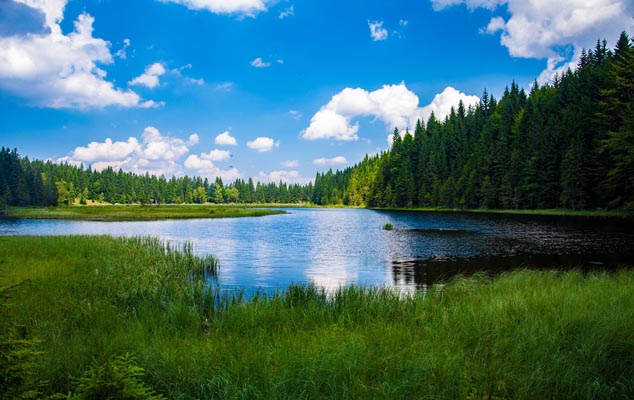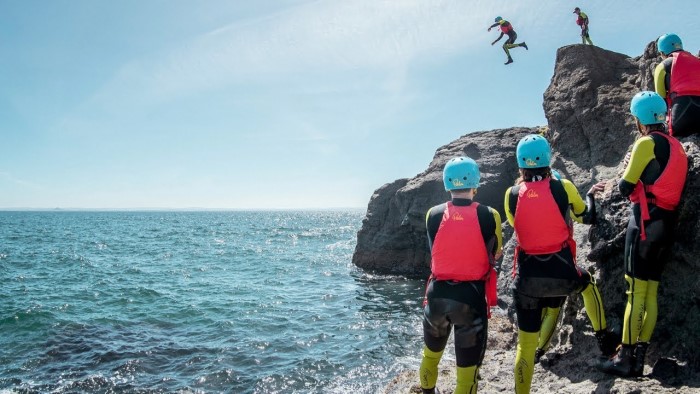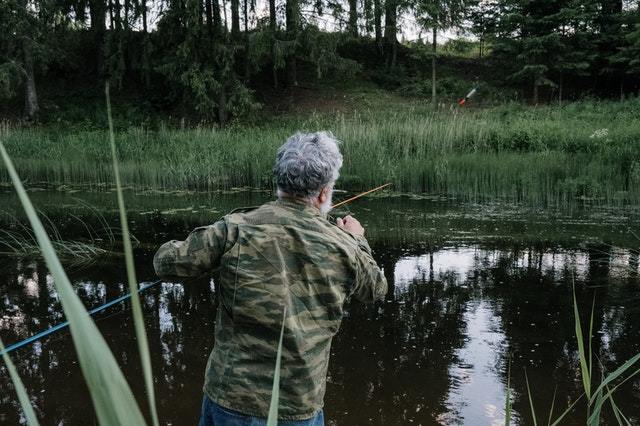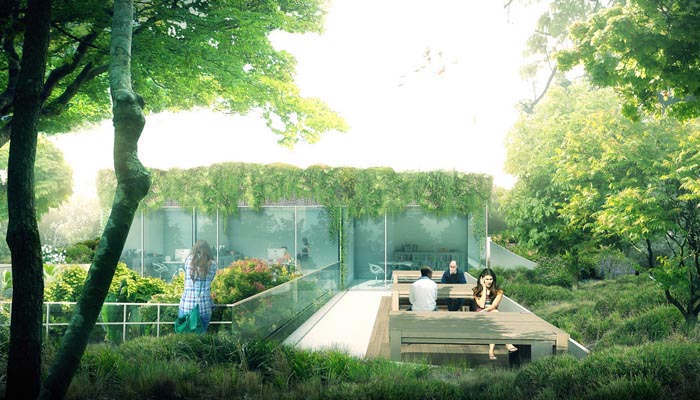Lake Aeration System – Discover the best types, benefits, and tips to choose the right aeration system for your lake.
Ever Wonder Why Some Lakes Look Crystal Clear? 🌊
Have you ever looked at a lake and thought, why does this water look alive and fresh while others look dull and green? The secret is often hidden below the surface—aeration systems. Without enough oxygen, lakes become stagnant, fish struggle to survive, and algae take over. But with the right aeration system, your lake can stay balanced, healthy, and beautiful all year round.
If you’re wondering “Which lake aeration system should I choose?” the answer depends on your lake’s size, depth, and your goals. Don’t worry—we’ll break it all down step by step. By the end, you’ll know exactly what works best for you.
Why Aeration Systems Matter for Lakes 🐟
A lake without proper aeration is like a room without fresh air. Oxygen is essential for fish, plants, and even bacteria that keep water balanced. Without it, harmful gases build up, bad smells form, and algae blooms spread.
Here’s why aeration matters:
- It keeps fish healthy and reduces stress.
- It prevents stagnant water and foul odors.
- It limits algae growth by circulating water.
- It reduces harmful mosquito breeding.
- It improves overall water clarity.
Think of aeration as giving your lake a pair of lungs—it allows the water to breathe.
Types of Lake Aeration Systems 🌬️
When it comes to aeration, not all systems are created equal. Each one has its own strengths depending on the size, depth, and condition of your lake.
The main types include:
- Diffused Aeration Systems
- Surface Aerators
- Floating Fountains
- Solar and Wind-Powered Aerators
Let’s explore each one in detail.
Diffused Aeration Systems – Best for Deep Lakes ⚙️
Diffused aeration works by pumping air through diffusers placed at the bottom of the lake. These create tiny bubbles that rise, carrying oxygen throughout the water column.
Why they’re great:
- Perfect for lakes deeper than 8 feet.
- Provide full circulation from bottom to top.
- Energy-efficient for large areas.
- Reduce algae and muck buildup.
Things to keep in mind:
- They require electricity near the lake.
- Not as visually appealing since they stay underwater.
“If your lake is deep and you want long-term oxygen balance, a diffused system is the champion.”
Floating Fountains – Beauty Meets Function 💦
Floating fountains aren’t just pretty—they also add oxygen. These systems spray water into the air, allowing it to mix with oxygen before it returns to the lake.
Why people love them:
- Add a stunning visual centerpiece.
- Provide surface aeration.
- Help reduce odors and algae near the top.
Consider this:
- They’re best for shallow lakes under 8 feet.
- They don’t circulate water at deeper levels.
Shallow lakes can benefit from floating fountains that spray water out of the pond and into the air to create a decorative pattern. Oxygenation occurs when water splashes back to the surface and released submerged gases. These systems tend only to be useful for shallow lakes and are relatively ineffective for deep ponds.
Comparison of Aeration Types
| Aeration Type | Best for Depth | Visual Appeal | Energy Efficiency | Coverage Area |
| Diffused Aeration | Deep lakes | Low | High | Large |
| Floating Fountain | Shallow lakes | High | Medium | Small-Medium |
| Surface Aerators | Shallow lakes | Medium | High | Small |
| Solar/Wind Aerator | Variable | Medium | Eco-Friendly | Small-Medium |
Surface Aerators – Quick Fix for Shallow Lakes 🌱
Surface aerators churn water at the top, increasing oxygen levels quickly. They’re often used in ponds or small lakes where immediate results are needed.
Advantages:
- Quick oxygen boost for fish.
- Affordable and easy to install.
- Useful during hot summer months.
Limitations:
- Only effective in shallow water.
- Don’t solve deep-water oxygen issues.
Solar and Wind-Powered Aeration 🌞🌬️
Eco-friendly homeowners often turn to solar or wind-powered aerators. They reduce energy costs and are great for remote lakes without electricity.
Why they’re smart choices:
- Work without electricity.
- Environmentally friendly.
- Perfect for off-grid areas.
But:
- Depend on weather conditions.
- May need backup power on cloudy or calm days.
Submersed Systems
Submersed systems are great for moving water in deep areas. These use an on-land compressor to pump oxygen from the air into a subsurface tube. The air emerging as bubbles from this tube pushes the water at the bottom of a pond to the top to promote the mixing of oxygen layers. Therefore, you will end up with a higher oxygen rate throughout all of the water in your lake. Additionally, these systems are great when you cannot plug a fountain into a nearby power source because you can convert them, so they run on solar or wind power.
Whether you want a floating fountain for an urban pond or a submersed system running on an eco-friendly solution for a deep lake in the woods, there are options for your body of water. These options have unique traits that make them better suited to one body of water over the other. The key to getting the benefits of an aeration system is to ensure you get the right option. Once you find the right fit, you will be able to enjoy the reduced algae, improved ecosystem, less sediment, and better oxygenation associated with these systems.
How to Choose the Right System ✅
Choosing the right system isn’t just about budget—it’s about matching your lake’s needs.
Here’s a simple checklist:
- Depth of the lake – deeper lakes need diffused aeration.
- Lake size – larger lakes require systems with wide coverage.
- Visual preference – fountains add beauty while diffusers stay hidden.
- Budget – factor in installation and electricity costs.
- Power source – choose solar/wind if no electricity is nearby.
Quick Lake Depth Guide
| Lake Depth | Best Aeration System |
| Less than 6 feet | Floating fountains, surface aerators |
| 6–8 feet | Combination of fountain + diffused |
| 8 feet or deeper | Diffused aeration systems only |
Common Mistakes to Avoid ❌
Many lake owners rush into buying a system without planning. Avoid these mistakes:
- Choosing a fountain for a deep lake.
- Ignoring electricity needs.
- Buying too small of a system for a large lake.
- Forgetting maintenance costs.
Remember, the wrong system wastes money and doesn’t solve the problem.
Benefits Beyond Oxygen 🌍
Aeration does more than just add oxygen. It:
- Prevents fish kills in summer and winter.
- Keeps shorelines cleaner.
- Reduces muck and sediment buildup.
- Creates a healthier ecosystem for birds and aquatic plants.
Cost Comparison of Systems
| Aeration Type | Average Cost | Maintenance Level | Lifespan |
| Diffused Aeration | $2,000–$6,000 | Low | 10–15 yrs |
| Floating Fountain | $1,500–$5,000 | Medium | 5–10 yrs |
| Surface Aerator | $800–$3,000 | Medium | 5–8 yrs |
| Solar/Wind Aerator | $3,000–$7,000 | Low | 10+ yrs |
Seasonal Considerations 🌦️
Different seasons affect how well aeration works:
- Summer: Prevents oxygen depletion in hot weather.
- Winter: Keeps water open for fish survival.
- Spring/Fall: Helps balance sudden temperature changes.
Year-round aeration means a healthier, more balanced lake ecosystem.
Maintenance Tips for Longevity 🛠️
Your aeration system is an investment, and taking care of it pays off. Here’s what you can do:
- Clean diffusers and nozzles regularly.
- Check air compressors for wear.
- Store floating fountains in winter.
- Replace tubing every few years.
- Inspect electrical connections often.
Do You Need Professional Installation? 👷
Some small systems can be DIY-installed, but larger lakes often need professional help. A technician can:
- Measure oxygen levels.
- Recommend proper placement.
- Handle electrical and safety concerns.
This ensures your system runs smoothly without costly mistakes.
Conclusion: The Right Choice Brings Life Back to Your Lake 🌿
So, which lake aeration system should you choose? If your lake is deep, go with a diffused aeration system. For shallow lakes, a floating fountain or surface aerator works best. If you want eco-friendly, go for solar or wind-powered systems.
The right aeration system isn’t just about oxygen—it’s about creating a thriving, balanced ecosystem where fish, plants, and people can enjoy nature together.
Key Takeaway: Match your system to your lake’s depth, size, and needs. That’s the real secret to keeping your lake alive and healthy.
FAQs: Lake Aeration System
What is the best aeration system for a deep lake?
A diffused aeration system works best for deep lakes. It circulates oxygen from bottom to top. This prevents stagnant water and harmful gas buildup.
Do floating fountains help with fish health?
Yes, but mostly in shallow lakes. They improve surface oxygen levels, which supports fish health. For deeper lakes, diffusers are better.
Can I use solar aeration if my lake is large?
Solar aeration works best for small to medium lakes. Larger lakes may need multiple units. Always plan for cloudy days with backup options.
How often should I maintain my aeration system?
Check your system every season. Clean diffusers and inspect electrical parts. With care, most systems last many years.
Is professional installation necessary for lake aerators?
Not always. Small systems can be DIY-installed. But for larger lakes, professional help ensures correct placement and efficiency.
Lakes serve many purposes, from catching rainwater runoff to offering a fishing spot. However, if you leave them unmanaged, they can become unbalanced and jeopardize the ecosystems within them. To remedy and prevent these imbalances, lake aeration systems are used. These create an oxygen-rich lake which offers many benefits.
For instance, they can convert phosphorous into other forms that don’t promote algae growth. While whole lake systems may not be your first thought that pops into your head when you need to remedy algae problems, they are a great way to create a balance that prevents algae from growing.
Additionally, they can help sustain an environment where fish, phytoplankton, and other organisms can thrive. Furthermore, you can use them to reduce the amount of sediment found sitting on the bottom of a pond. All of these can reduce the amount you pay for maintenance in your lake. However, the biggest question is which system you should choose.







Leave a Reply